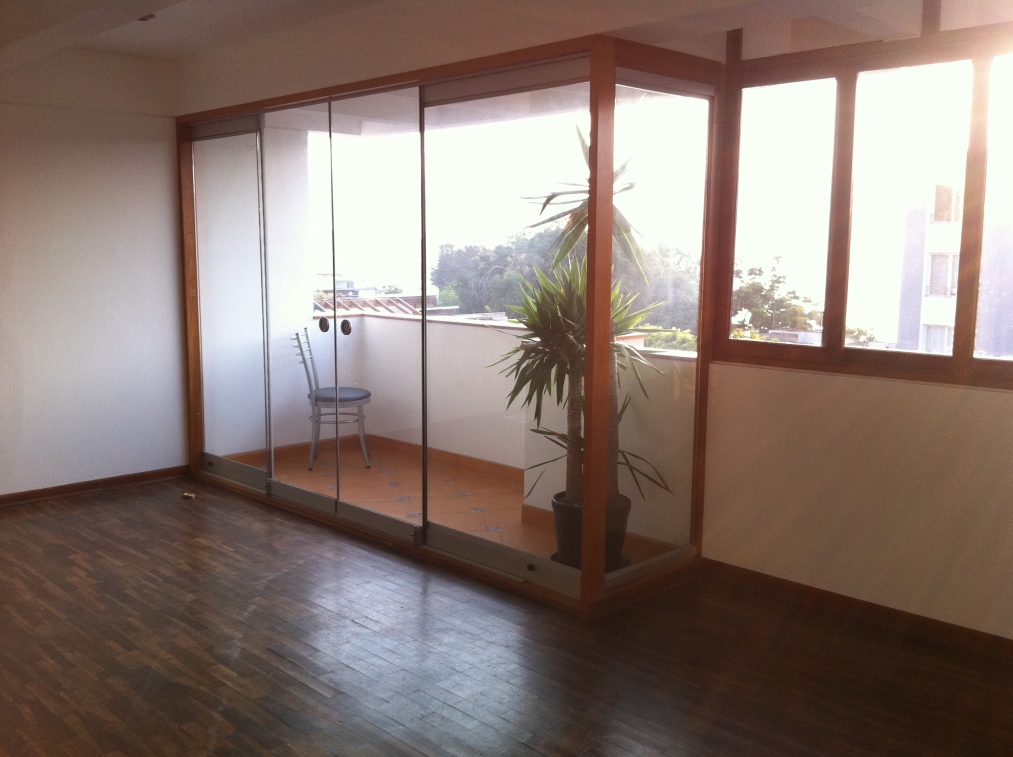I can do it in three days. It will cost you $80 in labor plus materials. You say $50? OK. We have a deal.
Negotiating prices with carpenters in Peru is easy. They will tell you X days and X cost, and if you lower the price they will agree if it sounds pretty reasonable. So you feel great, you found an inexpensive carpenter, and you made a great deal.
Unfortunately, the reality is something totally different.
Day one, the carpenter arrives with a plastic bag in his hand, and says: “Where are your tools?” You scratch your head, and wonder “My tools? Isn’t a carpenter supposed to have tools?”
Somehow, with a lead weight (no level) and your pen and saw, he manages to build a frame for the terrace. Fantastic. Until you realize the connecting frame is uneven, because he says the walls are uneven. Huh? “But don’t worry, it’s only differing 2 centimeters. That’s OK.”
Sure, it’s OK until you have to tell the glass smith that you need a square piece of glass that measures 170 cm on one side, and 172 cm on the other, while the top is 78 cm and the bottom is 80 cm. Of course the 2 centimeters matter!
But Eduardo and I fixed it. While the carpenter went out to lunch, we measured the distances over and over again, until we had figured out where the frame needed to be placed to have even sides. The carpenter was thrilled.
They say that finding a good carpenter in Peru is like finding a needle in a haystack. No one can recommend a carpenter. While they are called magicians (can make ANYTHING), they often don’t make it well. Perhaps the closet drawers don’t close, the bathroom cabinet is too big to fit into its space or the shelves are uneven. It’s never perfect.
This particular one, Amansio, with the face of a crook, was the epitome of unreliable. After finishing the terrace, we asked him to help us refinish our doors. While others were asking for $700 for 16 doors, Amansio agreed renovate them for $320. In 10 days. What a deal!
Or so it seemed before he disappeared with half of our doors.
For weeks we called him day and night. No answer. Either his phone was off, or he didn’t pick up. One week went by without doors on the bathrooms. Two weeks. We were thinking Amansio had sold our doors and had returned to the jungle. We would never see him again.Three weeks went by. Not a word. Four weeks.
Then suddenly out of the blue Amansio called and asked when he should finish the doors. No apology. No explanation. Nothing. But of course he needed more money. He had left the doors at a workshop, and had spent all the money, so now he needed money to pay the laborers.
Relieved, Eduardo went to pick up the doors and paid for the doors, and finally we could pee in privacy again.
So, in the end, how long did it take and what did it cost? Instead of 3 days and $100 for the terrace, it took 5 days and $120. For the doors – 2 months instead of 10 days, and $700 instead of $320.
It may be true that Peruvian carpenters are magicians. However, the only trick I’ve seen is how they make money disappear.












